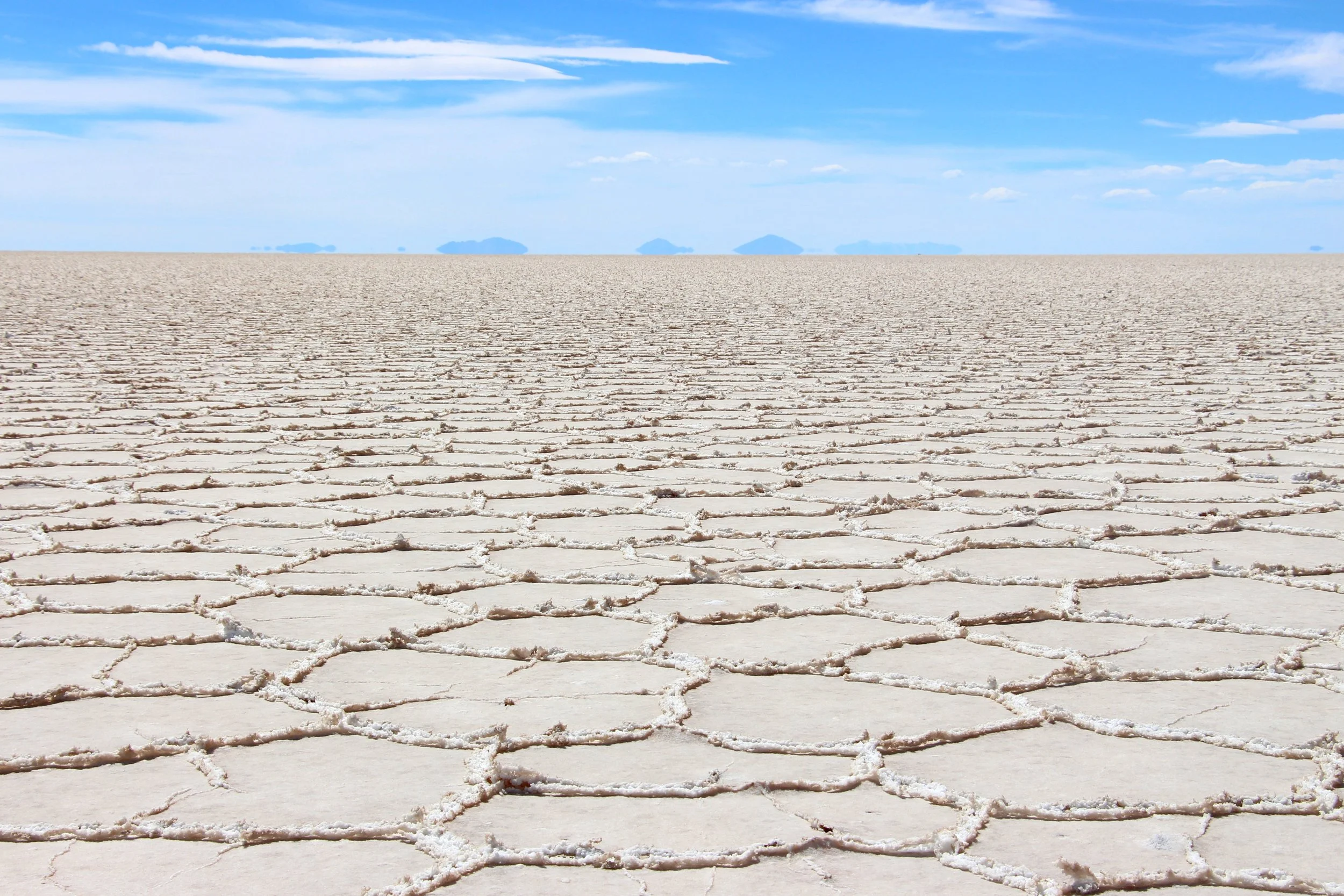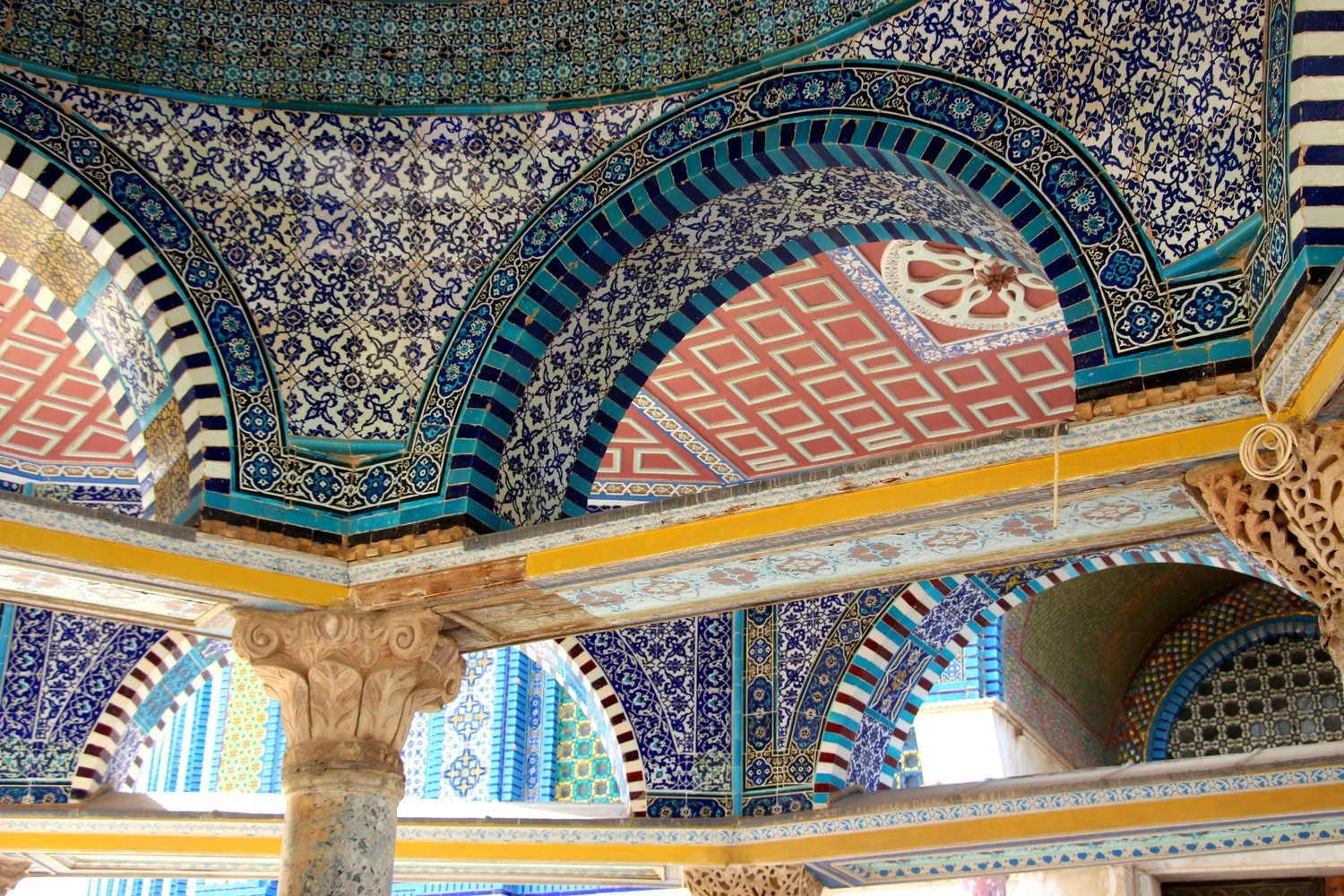The Taj Mahal is a tourist attraction that is 100% worth the hype, crowd, and line. It is an architectural masterpiece, and all eyes travel over the pools and up to the domes exactly how the genius creators intended. It is made of an ivory-white marble, and took about 20 years to build . Commissioned by the Mughal emperor Shah Jahan to house the tomb of his favorite wife, the Taj today acts as a mausoleum for both of their remains.
The structure is a testament to symmetry and grace, with the monstrous dome towering 115 feet above the base and surrounding lakes. The reflective pools and sunken gardens change as they slope away from the dome to keep everything proportional, and then the inlay of precious and semi-precious stones make staring at the Taj a pleasure, whether from near or far. It is spectacular.
It was a full moon, so we also signed up to visit the Taj by moonlight. It was much quieter and even peaceful (hard to get at tourist sites in India!), and we highly recommend it if the timing is possible.
Next, we hopped a train to India’s capital Delhi. The Holi Festival is the Hindu festival known as the “festival of color,” and it signifies the arrival of spring and the victory of good over evil. This was actually an anchor date for us, as spring and conquering evil are two of Blakely’s favorite things to celebrate! We found a fun place to go, put on some clothes we didn’t mind ruining, and prepared for fun. Blakely’s hair was pink for literally over 2 months!
We stayed at a charming B&B called B Nineteen Hotel—it was the perfect tranquil base in an otherwise hectic place. And then of course, we had to get our tourist on.
Our first stop was to the Qutab complex, a gathering of 27 Hindu and Jain temples and one of the oldest ruins surviving in India. The main attraction is the Qutub Minar, which is a giant minaret built by the first Sultan of Delhi in the 1300s. It was fascinating to wander and explore all of the temples, monuments, and tombs.
One of the major attractions in Delhi is the impressive Red Fort, which was the residence and political center for the Moghul dynasty in the 17 and 1800s. Though most of the valuable artwork and jewels were plundered, the defensive walls were left intact to be admired.
Nerd alert!
After all of that dust, it was time for some luxury in one of our favorite ways: Tea Time. Tea Time is the best because of the gorgeous setting, peaceful atmosphere and relatively reasonable price tag if you make it a meal. Whether in India at the Imperial Hotel or at the Livingston Hotel in Victoria Falls, we very much enjoy acting civilized for an hour or so.
Our last stop in India was a BIG one, and a place that shouldn’t be taken on lightly. It is a city shrouded in traditions that travelers can find unsettling. It is the pinnacle of Indian culture that, while magnificent, is the epitome of culture shock. We’re talking about the holy city of Varanasi.
Varanasi is the holiest city in the Hindu religion, and is also where Buddha gave his fist sermon which started Buddhism. Those being the two biggest religions in India make Varanasi pretty significant to its people. Mark Twain summarized Varanasi as only he can: “Varanasi is older than history, older than tradition, older even than legend, and looks twice as old as all of them put together.”
The city is located on the Ganges River, and the river is considered holy and the base of many rituals. In a country of intense overpopulation and the accompanying sanitation issues, we didn’t wonder why. Hindus believe that bathing in the Ganges brings absolution of sins, and all Hindus try to make the pilgrimage once in their life. But even more unique, Hindus believe that death in Varanasi will bring salvation and break the cycle of rebirth. This belief makes Varanasi a major center for pilgrimage at the end of life and for families bringing loved ones who have died. There are countless funeral pyres all along the banks, but these are mixed in with children swimming and locals doing laundry in a combination that you’d only find in India.
We stayed at one of our favorite hotels, Hotel Ganges View, which is a refurbished mansion located on the river. The gorgeous terraces and home cooked meals were the perfect comfort and base to explore the rather uncomfortable city.
We chose Varanasi Walking Tours as our hosts, and did the overview tour as well as the Sunrise Yoga Tour. Both were exceptional ways to see the city and experience the atmosphere that makes Varanasi so special.
A must in Varanasi is a boat tour at night and experience the ceremonies on the bank. The main ritual is Aarti, which is performed by Brahmin disciples and honors the river and deities. It takes place every night at 7pm no matter the weather, and is full of chanting, incense, and fire dancing.
Of course, the most frequent ritual is burning the bodies of loved ones in the many funeral pyres. They request no photos to maintain the holiness and sacredness of the experience, which we respected.
Lastly we participated in a beautiful ritual: Releasing a candle out on to the river as we made a wish! Pilgrims all over the world come to Varanasi to release a wish, and the river is full of the votive candles floating into the distance. We couldn’t wish for a cooler experience in India. It is truly a spectacular place that can’t be explored enough. If you ever have the chance, please visit. Bring a sense of humor and adventure, and let India sweep you away.
After the chaos, heat and dust of India, we retreated to a refuge chosen by countless pilgrims before us: the sacred Himilayan mountains.





